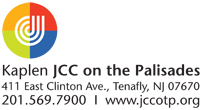
ElMindA aims to revolutionize treatment of a number of brain disorders by opening a new window in to the way the brain works
One out of every three people suffer from a brain-related disorder such as Alzheimer’s, Parkinson’s, ADHD, chronic pain or depression. But because the human brain and the conditions that affect it are so complex, blood tests and imaging are of limited value for diagnosing brain diseases and documenting the effects of treatment.
Even in the 21st century, there’s a lot of guesswork involved, and that means low treatment success rates at high costs.
The Israeli company ElMindA could revolutionize the field by opening a new window into how the brain works. Its trademarked, non-invasive BNA (brain network activation) technology has shown promise in clinical studies.
“Our vision is that every psychiatrist and neurologist in the world will routinely send every patient for BNA tests,” says Dr. Eli Zangvil, ElMindA’s strategic advisor for business development. “Our test would add information and aid in diagnostics in a way no other existing technology can do.”
The procedure is simple and painless. Patients sit at a computer for 15 to 30 minutes, performing a specific task many times while the device maps network activation points in the brain. The repetition allows the device to sift out brain activity unrelated to the task (such as thinking about what to eat for lunch). The result is a three-dimensional image of nerve cell connectivity and synchronization that is highly sensitive, specific and reproducible.
The tool is sensitive enough to show subtle differences in the severity of the condition from one day to another, says Zangvil. It can also optimize drug dosing by monitoring the changes in brain network activities as the drug takes effect.
In much the same way, clinical trials are proving the tool’s value for objectively diagnosing attention deficit hyperactivity disorder, which affects up to one in 20 US children.
Diagnosis today is based on a subjective behavioral and clinical evaluation, with a high rate of misdiagnosis and unnecessary drug treatment. BNA mapping would simplify diagnosis by comparing the patient’s scan to a normal and an ADHD profile. It would also play a role in treatment decisions and monitoring.
The company, under CEO Ronen Gadot, has about 18 employees at its Herzliya office and is backed by a world-class scientific advisory board.
For further reading please click here
